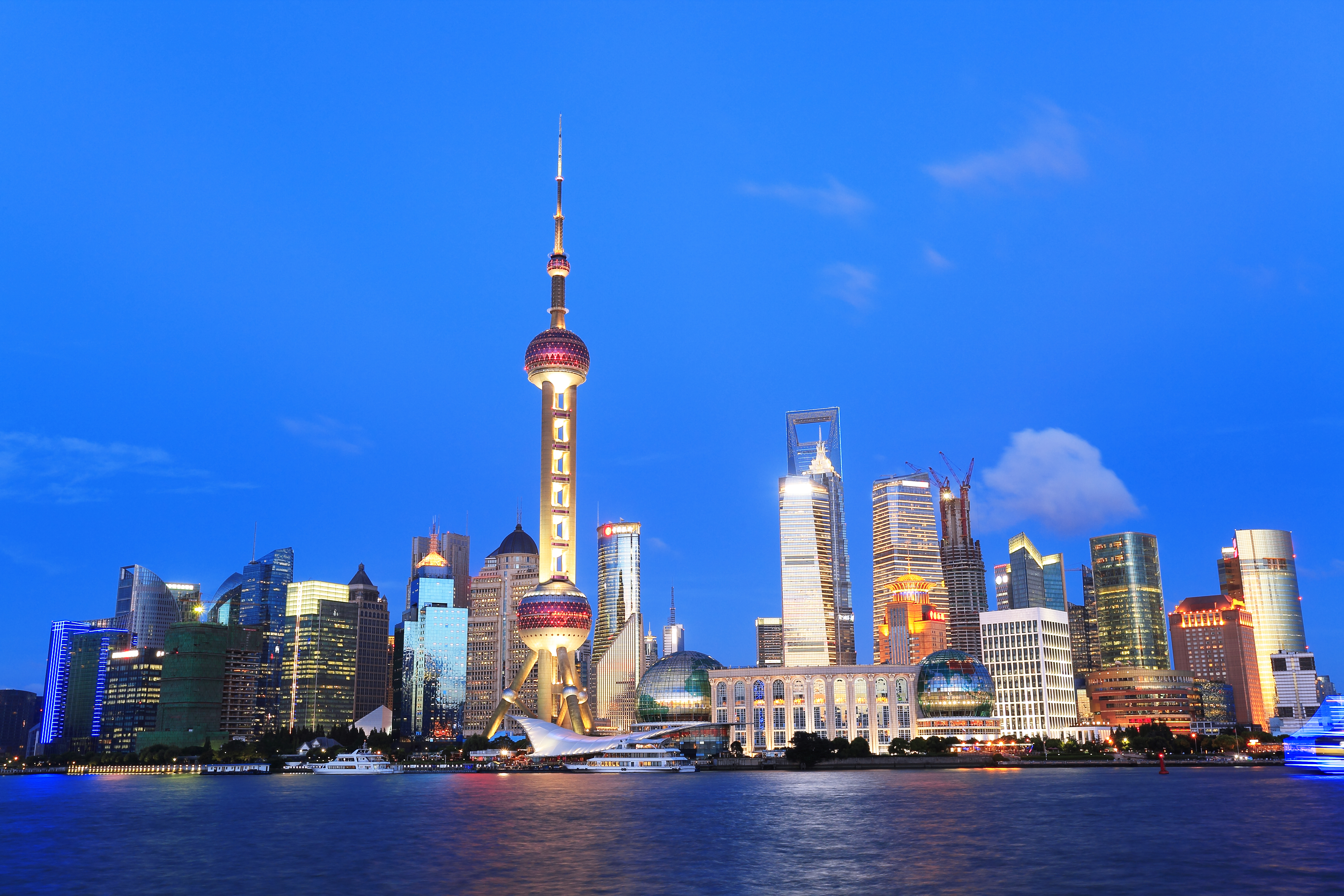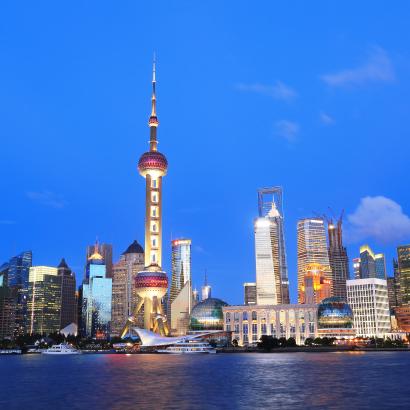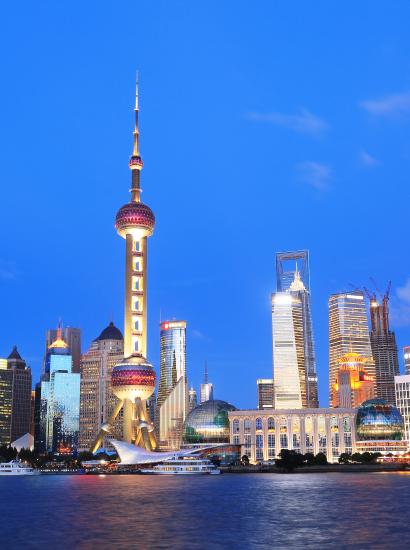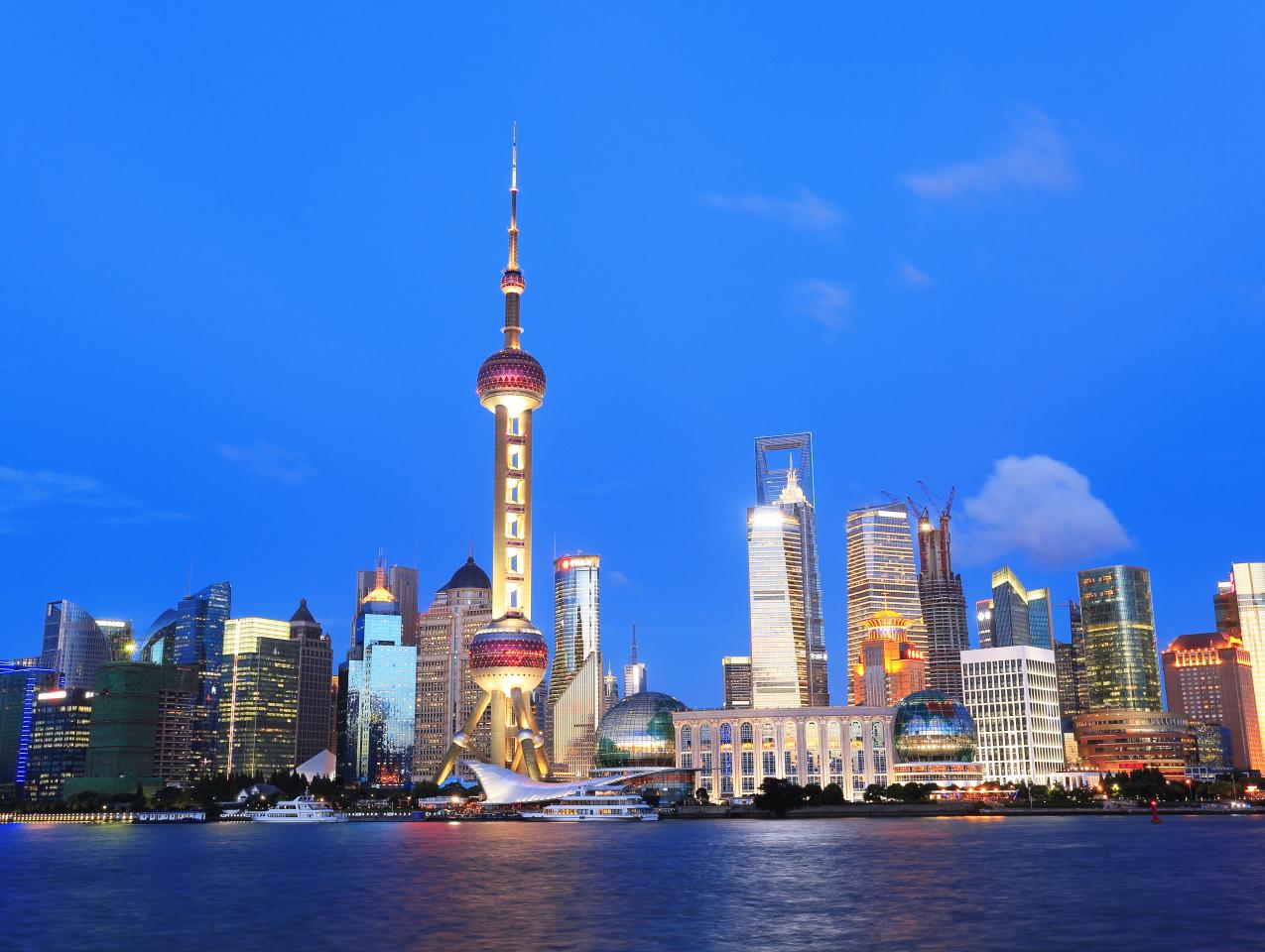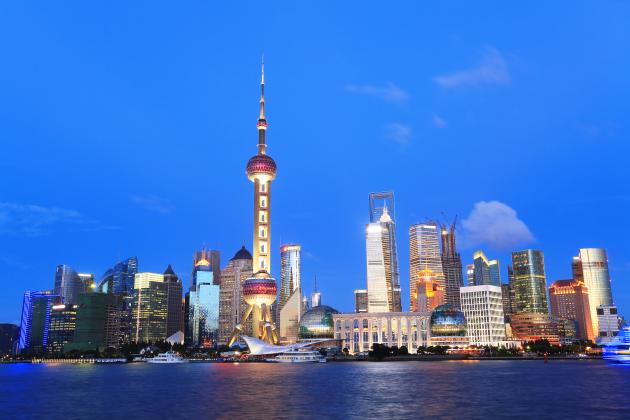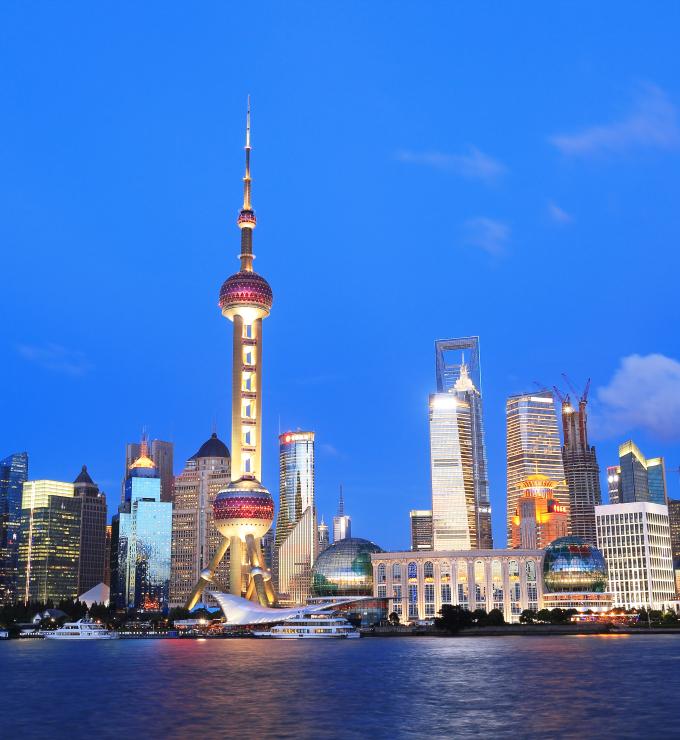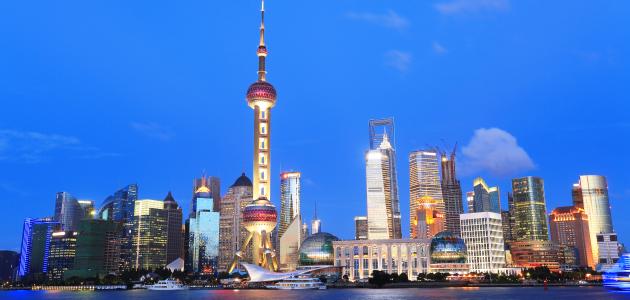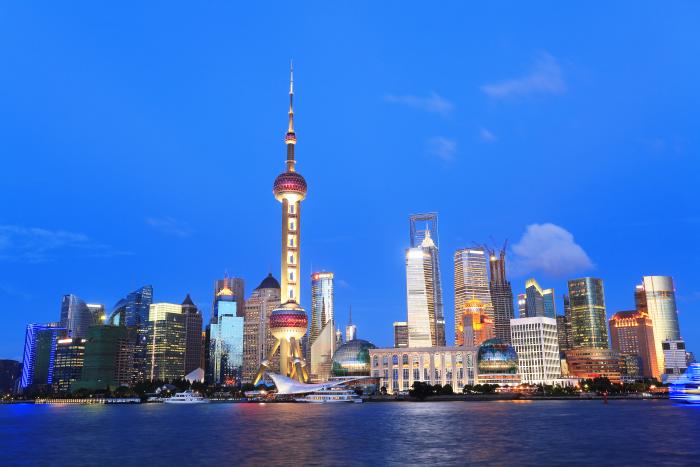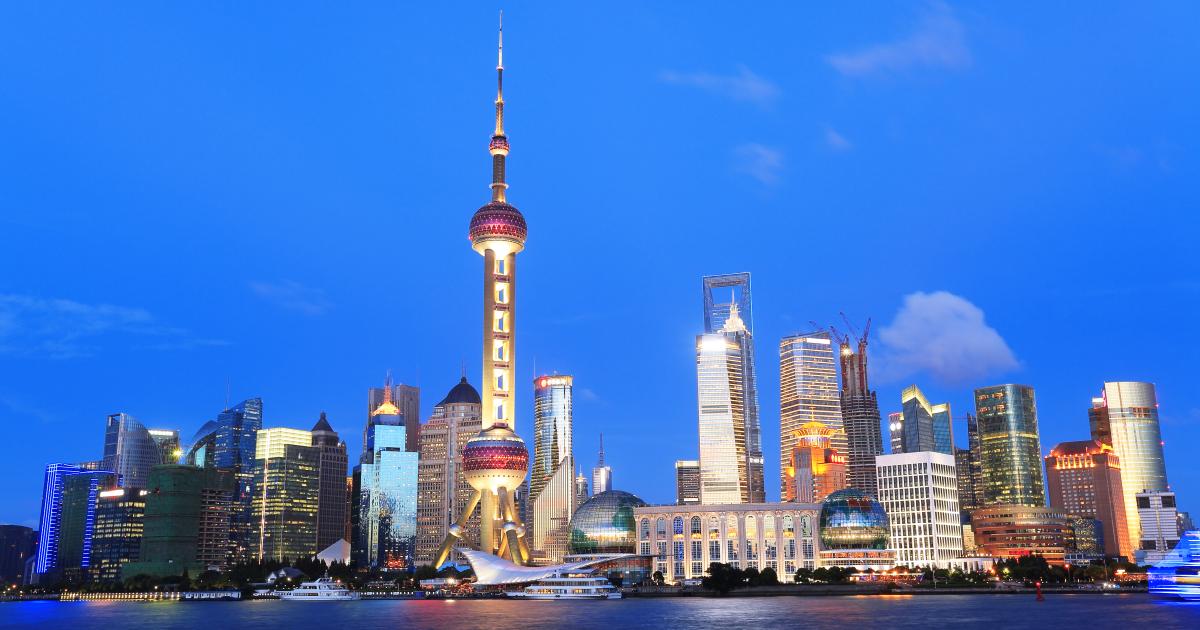Aspirational goal-setting has been a motivating form of governance for the Chinese Communist Party (CCP). In a 1957 international meeting of communist leaders in Moscow, Nikita Khrushchev proposed a goal that the Soviet Union catch up with U.S. industrial output within 15 years; Mao Zedong countered, in turn, that within the same time frame China would not just catch up with but surpass the United Kingdom. The result was the disastrous Great Leap Forward and its resulting famine.
But the CCP has also adopted pragmatic frameworks. For example, founder of modern China’s reform movement Deng Xiaoping colorfully described the country’s process of reform and opening as an incremental “crossing the river by feeling the stones.” And that history has been extremely fruitful. China’s GDP has grown from just 11 percent of that of the United States in 1997 to 63 percent just two decades later. Since the 1980s, 800 million people have lifted themselves out of poverty in China, alongside a population that has gone from overwhelmingly rural and poor to mostly urban and medium income.
Today, a combination of changes that are larger than any single leader or development plan have set up new challenges ahead for China—some of which are unprecedented both in China’s own modern history and in all of human history:
One known cross-current is demographic, reported on at length in this volume. The size of China’s working age population has for decades been growing at an average annual rate of 1.8 percent. But China’s workforce has peaked and begun to fall, and by 2040, it will be falling by 1 percent annually.
Governance is another challenge. The party has taken control of new information and communications technologies both to monitor the views of citizens and, to some extent, to respond to their concerns. Moreover, it uses these technologies as a means of censorship and surveillance to enforce authoritarian rule. In some ways the party’s responsiveness has enhanced the social contract; at the same time it has enabled more complete repression of the citizenry’s ability to mobilize and take action. The contradiction between economic flexibility and rigid single party political control may loom large in China’s future.
China’s growing economic weight and military capability are also changing the nature of how it balances alongside other global powers. As China increasingly “goes out” into the world, how will those strengths develop?
Meanwhile, air and water environmental degradation continues to vex social satisfaction levels and act as a shadow tax on health and economic wellbeing. Even in a modern, urbanized China, the gap in cross-cutting environmental performance remains one of the starkest differences with advanced countries such as the United States.
Understanding what these challenges mean for China into the future—and therefore how the United States should position itself——raises the following question: does China’s prominence in twenty-first century technologies such as artificial intelligence, advanced manufacturing, and information technologies now provide an auspicious chance for it to overcome the demographic, environmental, and other headwinds it faces and join the ranks alongside other global advanced economies? Similar challenges have historically hobbled the development of middle-income countries, but they lacked access to these promising new toolsets.
The papers prepared for this volume and expert discussion at the ensuing Hoover Institution roundtable illuminate this question. They argue that the challenges facing China are profound, but the regime’s adaptation of recent technological innovations has created a stronger and more responsive authoritarian state that will likely pose challenges for the United States in many dimensions.
Demographics
China’s period of reform and opening coincided with a demographic dividend in which the working age cohort increased its share in the overall population relative to dependents such as children and the elderly. Together with a large productivity-increasing rural-to-urban migration and commensurate education improvements, these forces helped underpin four decades of 10 percent annual economic growth. While we cannot predict the future of technological progress or political reforms, absent a catastrophic event, China’s demographic future through 2040 is essentially set:
- Decades of low fertility—following a sharp decline in the 1980s—means that China’s working age population (15-64) peaked just before 2015, is now shrinking, and will continue to shrink with growing speed.
- Specifically, the pool of potential young workers (ages 15-29), which are the best educated, most tech savvy, and most flexible in terms of working arrangements, is shrinking sharply.
- The 30-49 cohort—which has been observed historically as a peak age for innovation and high intellectual achievement—is also shrinking.
- Meanwhile, the 50-64 cohort—the least educated and healthy of China’s workforce—is growing but will start to shrink in number by 2040.
And with rising longevity, the elderly population over 65 is exploding. The pool of dependent seniors is growing by 3.7% per year, from 135 million in 2015 to 340 million in 2040, at which point it will comprise 22% of the population, making China a “super-aged society.”
These demographic headwinds imply that the coming generation will not see the phenomenal economic rise of the last without radical productivity-improving interventions: as Nick Eberstadt observes, “the demographic dividend has already been cashed.” They also introduce new pressures that could lead to social and political instability.
For example, how will China provide for the immense population of future seniors? Other countries, including the United States, face similar challenges, but the scale and intensity is considerably smaller. Today’s rudimentary and uneven pension and health system does not cover many Chinese seniors, yet the current unfunded pension and health liabilities are already comparable in scale to the country’s annual GDP. Traditionally, the elderly would rely on their children and families to support them. However, the small size of most Chinese families—a product of low fertility, whether forced or otherwise—limits their ability to perform that traditional caretaker role. The elderly will furthermore be concentrated in rural areas where social services and other resources are weakest. Rural China, in particular, is set to become one of the “greyest” populations ever observed in history. Caring for the elderly could lead to substantially increased welfare spending going forward, reducing resources available for other productive investments or geopolitical priorities such as foreign lending or military modernization.
Meanwhile, China continues to rely on domestic migration from rural to urban areas to maintain the workforce, both within provinces from villages to mid-sized cities and across provinces from the inner hinterlands to coastal megacities. Migrants, more than 40% of the urban population, are engines of economic growth. But they remain largely second-class citizens without urban residency status. Granting entitlements such as education rights for children of migrants could also redirect city budgets that have in recent years otherwise been available for large spending projects on infrastructure or security regimes.
Finally, there is the impact of extremely low fertility rates on social structures. As early as 1990, for example, four-fifths of children born in Shanghai were only children, themselves now having their own only children. This has led to the creation of an inverted “new family type” in China without any siblings or extended relatives—only ancestors. It has also led to a gender imbalance: by 2030, 20 percent of Chinese men in their early 40’s are expected to be never-married, up from just 4 percent in 2000. This new dynamic causes parents to devote immense resources on their child’s upbringing but also could generate a growing sense of social risk-aversion where the potential loss of sole lineage-bearers becomes intolerable.
The Chinese government is aware of these demographic challenges. It continues to emphasize urbanization as an engine for productivity growth, as well as education, and has taken more radical steps to try to affect culture: the wave of thousands of state-sponsored tech incubators in recent years has shifted modern Chinese attitudes towards embracing entrepreneurial risk-taking.
But the scale of these overall changes suggests that demographics will continue “to bound the realm of the possible.” Growing acceptance of immigration in a historically closed society may help China attract top “quality” workforce participants, but even large flows from China’s smaller neighbors cannot appreciably impact the “quantity” question. Meanwhile, any future pro-natal efforts by the state are likely to be as ineffective as they have been in other East Asian countries—unless China discovers new ways to use twenty-first century social monitoring technologies to incentivize or coerce its citizen’s behavior to these ends.
National Security Implications of Advancing Technology
In the military arena, China sees an opportunity to use twenty-first century technologies as one route towards overcoming the United States’ traditional dominance—one which they see as based on legacy systems potentially vulnerable to warfare of the future, including cyber weapons, artificial intelligence-enhanced information systems, and autonomous platforms.
Elsa Kania points out that artificial intelligence in particular has emerged as a new focus of competition between the United States and China: prowess in machine learning and big data has strategic significance for both economic development and military modernization. And this competition feeds on itself: current U.S. superiority, demonstrated by AlphaGo’s surprise victory over the best human Go players, stimulated China—the overtones of dominance in this traditional game of military strategy did not go unmissed to Chinese observers. The United States’ own pursuit of AI for national security purposes is in turn stimulated in part by China’s massive investments in this technology. Both parties believe AI could be revolutionary, and that it could disrupt the military balance.
China seeks the “intelligentization” of its military—wherein it uses data and machine learning to inform operational decision-making, enable new capabilities, and even change its force generation models—in order to augment its forces and become capable of fighting, and winning, on the modern battlefield. At present this is largely an aspirational goal supported by research, development, and verification that will play out for years to come. To do this, China both closely studies U.S. defense innovations and is mobilizing its own domestic firms and universities to support military use of advanced technologies.
For example, the PLA is now supporting a range of projects involving applications of artificial intelligence and related technologies for target recognition, electronic warfare, resilient communications, cyber security, and defensive and offensive systems. The PLA is pursuing autonomous vehicles—for air, sea, and land operations—enabled by machine learning and additive manufacturing, including swarming capabilities as an asymmetric counter to U.S. legacy platforms. It is also exploring use of artificial intelligence to support rapid decision-making. China already contends with the United States for superiority in the global military UAV market and is home to the largest manufacturer of commercial drones.
More broadly, it is important to appreciate that the combination of artificial intelligence and cyber warfare could potentially escalate future conflicts. Complex artificial intelligence systems involved in decision-making and operations could make mistakes, as they do, triggering decisions with unintended and perhaps escalatory consequences. And going forward, both China and the United States may in fact share similar vulnerabilities as advancing technologies make asymmetric weapons systems across various domains more accessible to less sophisticated players. The United States and China would be wise to continue track two and eventually military-to-military dialogues to reduce risk in this area.
Advancing Technology and the Chinese Economy
In artificial intelligence, China sees an opening to move beyond its fast-follower economy. As Kai-fu Lee and Matt Sheehan observe, the Chinese government and firms are joining others around the world in exploring the new “plateau” that has been created by recent advances in machine learning and big data. Chinese productivity in the period of reform and opening and rural-to-urban migration has already increased by 20 times. As demographic and other economic challenges now loom, one goal is to apply these new technologies throughout many sectors to help extend such growth.
Enthusiasm in the country is heightened by a sense that China may in fact have comparative advantages in the application of artificial intelligence throughout the economy. Early in the 21st century, following decades of research and building on an explosion of digital data and advances in computing power, machines became able to learn from the data, recognize patterns, and predict the best answers, allowing them to take on many tasks such as driving a car, diagnosing a disease, and making a loan. This advancement marked the culmination of a period of great “discovery,” which favored the most elite research institutions at universities and global companies, such as those in the United States. Now, however, the focus of the field may be shifting towards “application” of this technology, which could play to Chinese strengths:
- This period of implementation favors the engineer, not the scientist, and China produces large numbers of well-trained, competent engineers to fill the ranks of startups and large companies.
- Vast amount of data, the raw material for machine learning, are being generated as Chinese citizens willingly funnel a growing portion of their daily activities through their smart phones, providing Chinese companies a deep and multi-dimensional picture of their lives.
- The U.S. technology ecosystem excels at innovation, creation of an original product or service. China’s technology ecosystem excels at imitating and improving on a successful business model. When a new approach proves successful, dozens or even hundreds of Chinese startups flood in and compete ferociously, exploring hundreds of variations. Few survive; the process rewards those best at iteration and execution.
- Chinese legal, social, and interpersonal trust-based transactional norms remain poorly developed; mediating those experiences through objective digital decision-making platforms may significantly reduce transaction costs and enable new sorts of economic interactions that are taken for granted in the United States.
- Meanwhile, China is now more open to accepting that, while market-exclusion and IP theft or copying helped it gain such a strong digital technology position, it should now protect the newer domestic innovations built on top of this foundation. Chinese firms seek to beat U.S. rivals in exporting these products to the developing world, especially Southeast Asia and Africa, extending Chinese influence in the process.
To take advantage of this perceived opportunity, the central Chinese government has provided signals to local officials encouraging them to support investments in artificial intelligence technologies, through “guiding funds,” public projects, and performance evaluations. While some commentators have argued that the United States federal government should respond in kind with its own “AI strategy,” it is important to keep in mind the fundamental differences and different tools available in China’s “totalitarian market” economy and top-down governance system. Even in China, the most impactful applications of artificial intelligence today have largely come from private technology firms at arms-length from the central government and pursued for commercial ends. Kai-fu Lee observes that today the world’s most valuable speech recognition companies, machine translation companies, drone companies, computer vision companies, and facial recognition companies, are all Chinese.
Alongside these advancements, many jobs throughout the Chinese economy are vulnerable to disruption.
One category is physical work. Nearly half of Chinese workers are on farms or in factories, often performing repetitive tasks which are subject to automation and robotization. Productivity of today’s rural workers is particularly poor in China, especially in regions with small plots, lack of investment, and poor logistical infrastructure. Meanwhile, China is by some measures already the world’s most competitive manufacturing power. It is also already the world’s largest robotics market. But penetration levels remain below the global average, and firms have responded by attempting to acquire established overseas vendors and technologies. The pace of disruption felt in both fields will depend on how quickly capital-intensive automation or advanced-manufacturing practices can be successfully applied to these tasks.
Another category is white-collar jobs. Here the impact on employment is likely to be varied. Machine learning performs well under certain conditions—abundant data, narrow goals, and clear outcomes. But it struggles with strategic tasks, unclear goals, and creative or social tasks—all areas where many of today’s white-collar employees are likely to have more job security. Many care, service, and creative jobs—at both the high and low ends of the economic spectrum—are likely to be secure. Many middle-income college-educated office workers, however, who take data and make predictions face risky prospects. The implications for this uneven impact across economic groups will be a challenge that China shares with other modern economies including the United States.
Communication Technologies and the State-Citizen Relationship
Maria Repnikova observes that “much of Chinese life is increasingly virtual,” a transition which has not led to democratization of the country but which has created an “unprecedented space for public expression.”
WeChat, for example, has over a billion active users. Individuals use WeChat to connect with each other, receive news, and make mobile payments for almost everything. Through platforms like WeChat or the Weibo microblogging social network, society can now access prominent journalists, lawyers, professors, and intellectuals. Civil society groups collaborate. Digital peer-to-peer financial technologies have gained rapid adoption in a society with a traditionally underdeveloped personal financial system.
News also breaks first on the internet. As Chinese citizens moved towards digital communications and social media platforms in the 2000s, traditional news outlets struggled in China as elsewhere globally. In China, this demise also meant the weakening of conventional propaganda. Authorities at times lose control of discussions that start online but sometimes move into real life as well.
This digital communications revolution created a new vibrancy in China, especially since the first movers to occupy this technological whitespace have generally been private parties who otherwise faced great barriers to success and innovation in state-controlled media. And private Chinese citizens reap the benefits of that, despite using an internet which has been largely, and is increasingly, cut off from access to foreign content or participation by foreign firms.
Meanwhile, Chinese authorities are responding. Xi Jinping’s administration has placed the “battle” for public opinion as a core party objective, adopting sophisticated government and party digital media “PR” strategies that seek to leverage these technologies to improve operational and responsive governance—“responsive authoritarianism”—while nonetheless attempting to strictly control any content that could lead to mobilization or action..
This has led to a complex relationship between authorities and individuals.
On the one hand, authorities use censorship and surveillance to support authoritarian rule: journalists and editors receive censorship instructions, censors weed out negative elements, and commentators—paid or voluntarily nationalistic—inject pro-regime views. As an explicit prerequisite for doing business, private Chinese internet companies furthermore funnel (compulsory) real-name user data by default to authorities, allowing them access to vast collections of citizen data. Firms use this to mine personal information and train algorithms for new products and services. Authorities use it to monitor the activities of individuals and to establish “social credit” systems to reward pro-regime behaviors and punish activities contrary to the regime’s wishes. Most darkly, China’s advanced digital surveillance capabilities have been put to use to turn entire provinces into near police-states in the name of public security: increasingly private intrusions have been piloted on the daily lives of the Uighur ethnic minority in Xinjiang Province, elements of which are then spread to the broader Chinese populace over time.
But authorities also use the internet to identify citizen concerns and solicit feedback—using these digital tools as a new way to boost legitimacy. The CCP has built an immense infrastructure of social media minders at all levels of government to manage and monitor its network platform-based interaction with the public. Official social media mix the party line with entertainment and advice. Censorship is intentionally incomplete and sporadic, allowing a publicly visible but nonetheless controlled venting of opinion. Individual expressions of discomfort, including about corruption, pollution, and inequality, are monitored to gauge public sentiment. This is all up to a point: authorities are most sensitive to discussions that could lead citizens to mobilize and take action. Uncontrolled cyber nationalism, especially among youth, is also regarded as potentially destabilizing when it ends up constraining authorities’ decision space. Both Chinese citizens and officials are adaptive and innovative, resulting in a more politically active society and a more responsive authoritarian state.
Overall, authorities regard China’s internet management strategy as a success given the threats these technologies looked to pose to the regime in the early 2000s. As with commercial technology firms “going out,” authorities also aim to export scaled-down models of Chinese-type “cybersovereignty” to other interested developing nations. This suggests an increasingly divergent U.S.-China global model of internet governance, digital technologies, and society-state norms. Against this backdrop, some commentators suggested that U.S. tech firms should consider how engaging in the Chinese market may negatively affect their own global images. Others, however, pointed out that U.S. firms should resist shying away from developing country markets for values-based reasons only to cede that market to players without any western influence.
Concluding Observations
Ambassador Stapleton Roy observed that China is acutely aware of the heavy price it has paid throughout modern history for its technological backwardness. But today, Chinese authorities see an opportunity to level the playing field. In this round of history, both commercial and state actors are mobilizing to become masters of twenty-first century technologies, not just to neutralize this historical source of weakness but also to use these technologies as a way to leap over the significant challenges the country now faces. These capabilities are seen as a potentially novel path to overcoming the middle-income trap through continued rapid economic growth until mid-century, while sustaining Chinese-style authoritarianism.
One question is are Chinese-style central planning institutions capable of handling this complexity and uncertainty? It is important to understand, however, that while Beijing may set goals for technological achievement, the relatively small central government and party apparatus often relies on distributed, bottom-up regional efforts to implement them. Private tech firms develop advanced facial recognition capabilities because of a willing municipal public security bureau buyer—and guided by a compulsory board seat given to a party member. A local cadre gives free land to a local agricultural robotics manufacturer to cultivate a new source of tax revenue—and receives positive career promotional consideration in doing so. A county environmental agency receives central government funding to hire a full-time social media monitor, using public opinion to prioritize enforcement efforts on the worst polluters—while censoring efforts to plan a citizens protest. Moreover, our panelists observed that Beijing’s pragmatic streak means that midterm corrections can be made, often through quiet reorientation, when reality is not going to plan.
Despite this, some surprising retrenchment is visible today. For example, Beijing has returned to debt-based infrastructure spending to counteract economic growth slowdowns. It has fallen back on new rounds of subsidies to struggling state-owned enterprises rather than letting their more nimble domestic private sector competitors allocate capital. The urban-rural hukou identification system persists as too-attractive a tether on society to let go, despite the economic and potential humanitarian benefits to reform.
Moreover, China’s economy is probably not as strong as it appears. A recent Brookings Institution paper by researchers at the University of Hong Kong and the University of Chicago estimated that China’s annual economic growth rates from 2008 to 2016 had been overstated by as much as 1.7 percent each year and its investment and savings rates by even more. As the authors explain, China’s central government calculates the country’s economic performance using data from local officials, who are incentivized to exaggerate their own rates. Other analysts have pointed to economic implications of the country’s extensive shadow banking and hidden debts. Such miscounting can add up over time, and it has actually led to the rise of cottage industries using new technology such as commercial satellite imagery and other proxies to arrive at more actionable estimates of Chinese economic activity. Whatever the true figures, this points to the importance of looking for Chinese strengths and weaknesses as they are, and not through a narrative of predetermination.
All told, China faces serious countervailing trends: technological dynamism and a novel model of agile governance weighed against demographic decline, authoritarian rule, and environmental challenges. As it seeks to escape the middle-income trap, will artificial intelligence and other advanced technologies spur sufficient productivity growth—and do so quickly enough—to counteract the loss of labor supply? Will they provide a great leap forward and make China a “modern well-off society,” despite the commensurate social disruption risks, such as job losses, or rather play supportive, incremental roles as stepping stones? Chinese domestic perceptions of progress here are likely to affect geopolitical calculations as well: the timing of and priority placed on China’s Taiwanese reunification aims and the hand-off between Deng Xiaoping’s aphorism of “biding time” versus Xi Jinping’s consciously outward-projecting “One Belt, One Road” for example. Overestimation of technological progress could lead to miscalculations of ambition and capability.
In particular, China’s emerging means of governance through its use of these technologies—responsive authoritarianism—brings new wrinkles to the old image of a centralized state. Some commentators speculated that going forward the government may lean harder on these tools for tracking citizens’ behavior and coercing or incentivizing behavior. Might this approach be extended to address China’s demographic challenges, perhaps to encourage higher fertility, for example, by crediting those who have more than two children while punishing those with fewer?
Beyond its borders, China may seek to export this governance model (which it views as legitimacy-enhancing) to willing developing states as an alternative to the West’s own export of liberal democracy. The spread of Chinese-style authoritarianism may therefore pose an ideological challenge for the United States and its traditional values of a free internet, free expression, privacy, and democratic governance.
China’s technological prowess and progress challenge U.S. supremacy in this area as well. It may be tempting to try to hinder Chinese technological efforts in a bid to maintain superiority or in justifiable grievance for China’s past failures to abide by international rules of trade or statesmanship. In the long-term, as we deal with China as both a strategic competitor and major trading partner, much will depend on how the United States addresses its own headwinds on these same matters of demography, technology, and governance over diversity.
For the United States, it is important that we do not try to “out-China” China. Rather, we should focus on bolstering our own strengths:
- The United States government should continue to make the global case for liberal democratic values, which retain universal appeal if not universal applicability. It should also support the ability of the U.S. private sector and civil society to do the same through cultural and human outreach—this is an area in which the United States is an undisputed leader and China shows few prospects of catching up.
- More concretely, U.S. values can be applied towards updating ideal models of internet governance and business too. In the early years of Web 2.0, U.S. digital firms decried then-nascent efforts by China to first censor and later close off its internet market. More recently, the United States focused on European efforts to fine, tax, and closely regulate U.S. internet businesses. As U.S. society now re-examines some its own attitudes towards domestic digital communications, it should do so with an eye towards ensuring both the competitiveness and attractiveness of U.S. internet business and governance models in developing countries, the next wave of global online marketplace growth. Becoming too inward-looking at this point in history could have long term implications for our ability to affect ideals and norms in this increasingly central realm of global influence and culture.
- Similarly, as technological advances such as automation change the nature of work in this country, the United States should not forget that it remains part of the world, whether it likes it or not. Lessons learned, positive and negative, from the last three decades of trade liberalization can be applied to technological disruptions—we can do better from experience. The American government need not copy the Chinese state’s AI development campaign, for example, but it should not stand in the way of productive technological development for fear of social impact. Our global competitors with no such compunction may instead end up being the ones doing the disrupting. At minimum, the United States should ensure that it has created the framework to enable private development of twenty-first century technologies: rule of law, strong infrastructure, minimizing costs of doing business, liquid markets, and a predictable regulatory framework.
- Technological advances will also color the strategic competition between China and the United States. Chinese military planners see a future of warfare enabled by data and computational capacity and are pursuing a host of AI-enabled military capabilities—an effort made possible in part by substantial, if compulsory, civil-military fusion of technology companies. The full U.S. response to China’s military expansion is a topic for another time, but, as in the realm of internet governance, the United States cannot emulate the Chinese approach here, nor should it. Instead, we must work to secure and sustain our superior technology, committing the resources and infrastructure necessary to expand and capitalize on research into the military applications of AI. At the same time, we must remain cognizant of the risks to strategic stability posed by AI-enabled early warning and command and control systems.
- Finally, the environment. The United States is fortunate to possess a variety of excellent natural resources and to have had a century of experience in developing the complex institutions necessary to preserve human health and environmental quality while sustaining a robust industrial base. Chinese (and other) visitors to the United States routinely remark at how enough money can buy most material aspects of American life in modern cosmopolitan cities such as Shanghai or Beijing—but it cannot purchase clean air, water, and food. In China, over 1.5 million deaths each year have been attributed to air pollution, and drought pressures, already severe, are expected to grow. As the United States justifiably seeks to maintain global economic competitiveness while staring down potentially daunting new environmental and resource challenges such as climate change, it should play to its own ideals and be careful not to accidentally let go the things that make America great today.







